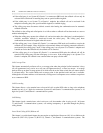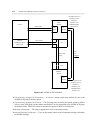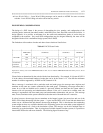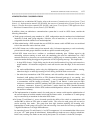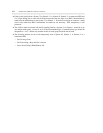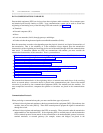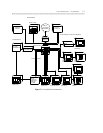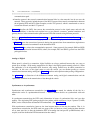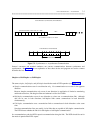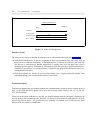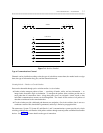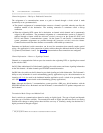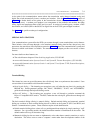7-2 DATA CONNECTIVITY — AN OVERVIEW
_ ___________________________________________________________________________________________________________________________
_ ___________________________________________________________________________________________________________________________
_ ___________________________________________________________________________________________________________________________
DATA COMMUNICATIONS VARIABLES
Data terminal equipment (DTE) are devices where data originates and/or terminates. Host computer ports
and terminal ports usually function as DTEs. Your communications system can be used to switch data
originating or terminating at any of the following DTEs and networks (see figure 7-1):
• Terminals
• Personal computers (PCs)
• Hosts
• Local area networks (LANs) through gateways and bridges.
• Packet switches through external packet assembler/disassemblers (PADs).
How the connections are made varies depending upon the physical, electrical, and logical characteristics of
the transmission. That is, the suitability of a data connection always depends upon the transmission
characteristics of the originating and receiving devices and of the media through which the communications
must travel. To determine whether one DTE can communicate with another, you must consider the
transmission characteristics of the connection. That is, you must know:
• Whether the communications protocols (including the physical interface — RS-232C, RS-449, V.35,
and so forth) of the originating and terminating DTEs match
• Whether analog or digital facilities are being used for the connection
• Whether both DTEs are synchronous or asynchronous
• Whether the DTEs expect communication in the simplex, half-duplex, or full-duplex mode
• Whether the information (bits) are transmitted in parallel or serially
• The speeds at which the DTEs operate
• The type of communications channels used in the connection
The transmission characteristics of the originating device or network must match those of the receiving
device or network unless a conversion device is placed in the communications path. Some of the needed
conversion is provided by data communication equipment (DCE), like modems and data modules. For
more complicated conversions, computers that perform as converters are placed in the communications
path.
Communications Protocols
When you design a communications path, you must consider three types of protocols:
• Protocols that originate and terminate at the data communications equipment (DCE) (like modems, data
modules, data service units [DSUs]). These DCE-created protocols prepare the signal for transmission
through the switch.
• Protocols that originate and terminate at the DTEs or networks. These protocols make the transmission
understandable to the destination DTE. If the originating DTE or network protocol and the destination
DTE or network protocol do not match, for the transmissions to be understandable, protocol converters,
terminal emulators, or network gateways (for example, routers and bridges) are placed in the



